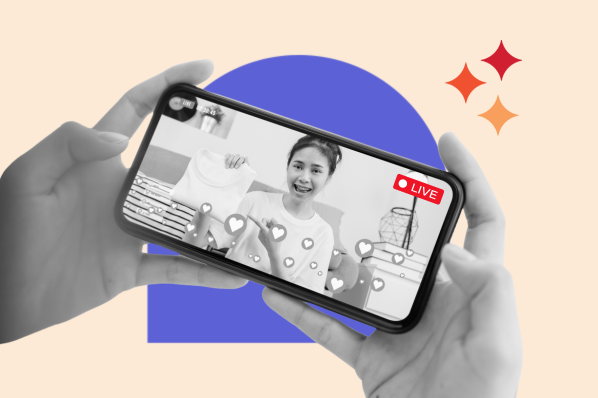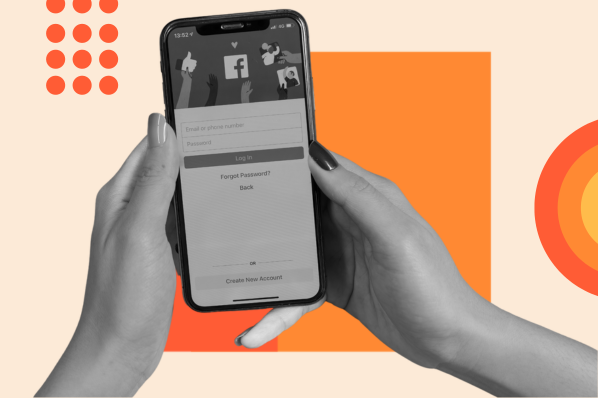1. Sign up for a business page.
The first thing you need to do is create a business page. This is a simple process. All you have to do is log on to Facebook, click "Pages" in the left sidebar, and then "Create New Page."
To get started, you'll upload a profile picture, a cover photo, and basic information about your business. This will include what type of business you run whether you run a B2B business, a local business, or an ecommerce site.
Once you sign up, it's smart to start optimizing your page.
2. Optimize your profile.
Now that your profile is up and running, you'll want to optimize your page. This means writing your About section, adding business information like your website and business hours, and including a call to action button such as "Book Now," "Shop Now," or "Sign Up."
Additionally, you'll want to draft several posts that will engage your audience. Think about what type of posts they might like on social media. How are they interacting with your competitors? What posts perform well for your competition? This is the type of content you'll want to model yours after.
Now that you've built and optimized your business page, it's time to engage with your community.
3. Be active in Facebook groups.
A great way to promote your business on Facebook is to participate in Facebook groups. You can engage with public groups or join private Facebook groups.
To get started with this, you'll want to consider what type of groups your audience would be a part of. Once you've finished brainstorming, you can join the same communities that your audience is active in.
4. Create your own Facebook group.
While it's important to engage with your audience where they're at, it's also important to attract your audience to your own pages. You can do this with your own Facebook group.
Krystal Wu, a social media community manager at HubSpot, says, "Facebook Groups allow our audience to connect with each other and have valuable discussions. Businesses who center a Group around their brand or industry can build a community around it — making our brand and products even more valuable to potential customers."
5. Promote events.
Another way to promote your business on Facebook is to use the social media platform to promote your events. If you're a local business, this is especially important.
Attracting people to an event can feel like an undertaking, and you need to use all the tools at your disposal to promote it. That's why you should post your event on Facebook and also plan an ad campaign.
6. Interact with your followers.
This might seem like social media 101, but it's important to interact with your followers. The best way to get engagement on social media is to make sure your posts show up for your followers. To do that, you need to create interaction. Make sure you answer questions, respond to comments, and participate in your online community.
7. Use live streaming.
Facebook live is an excellent tool to promote your business and provide valuable content to your audience. You can use this feature to showcase your company culture, host a panel discussion on industry topics, or even display your industry expertise.
Additionally, you can host events virtually on Facebook live as a way to interact with your audience that can't be at an event in person. This is a great way to promote your business because going live will notify your followers and prompt them to engage with your page.
8. Run Facebook ads.
One of the best ways to promote your business with Facebook is to use Facebook ads. The social media giant has created one of the most popular ways to reach your audience with its advanced targeting options.
To get started with ads, you can review this lesson from Facebook directly. Make sure that you review the types of Facebook ads and various bidding strategies to help you succeed.
9. Talk about your company culture.
When you post on social media, your content should promote your overall brand messaging. A great way to do this is to talk about your company culture. Showcase your employees and their day-to-day tasks.
You can also use Facebook as a recruitment tool, hosting panels on what it's like to work at your company, or posting jobs right on your business page.
10. Manage contests and giveaways.
Encouraging engagement is one of the main objectives of Facebook promotion. To do this, you can host contests and giveaways that your audience will want to participate in. This will help increase brand awareness and encourage interaction from your followers.
11. Have a customer service representative field comments and requests from customers.
Social media is a great way for your customers to get in touch with you. However, if they choose to reach out to you on Facebook, you need to be prepared to answer their questions and address their requests. To do this, consider having a few people from your customer service team answer messages or comments from your customers.
12. Post valuable content.
Ultimately, the best way to promote your business on Facebook is to provide valuable content for your audience. Content is what attracts people to your social media profile and is the way you'll build an audience online. You'll want to include different types of content including images, videos, text, Stories, or even polls.
Facebook is an essential part of your social media marketing. No matter what type of business you're running, it's important to develop both organic and paid social media strategies to promote your business on Facebook.
Facebook Marketing


.png)





![22 Facebook Stats to Know in 2023 [+HubSpot Data]](https://53.fs1.hubspotusercontent-na1.net/hubfs/53/Untitled%20design%20(8)-1.jpg)
![How to Create a Facebook Group for Your Business [+ Why You Should]](https://53.fs1.hubspotusercontent-na1.net/hubfs/53/Copy%20of%20Featured%20Image%20Template%20Backgrounds-Jun-30-2023-05-58-51-2746-PM.png)
![Facebook Insights: A Beginner's Guide [+ Step-by-Step Instructions]](https://53.fs1.hubspotusercontent-na1.net/hubfs/53/Untitled%20design%20(38).jpg)

![11 Facebook Cover Photo Size & Design Best Practices [Templates]](https://53.fs1.hubspotusercontent-na1.net/hubfs/53/facebook%20cover%20photo%20size.jpg)